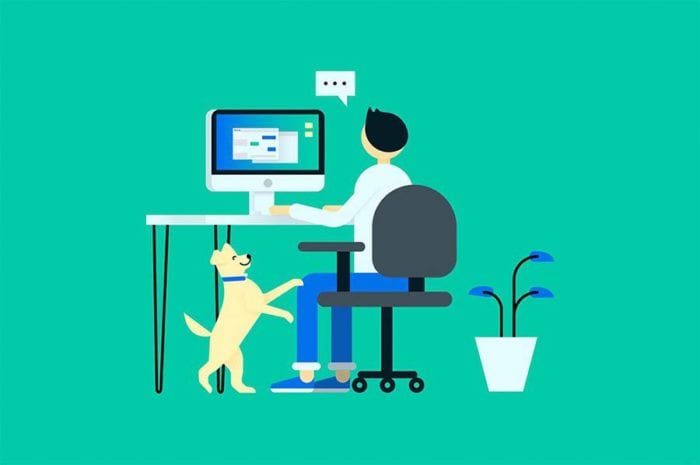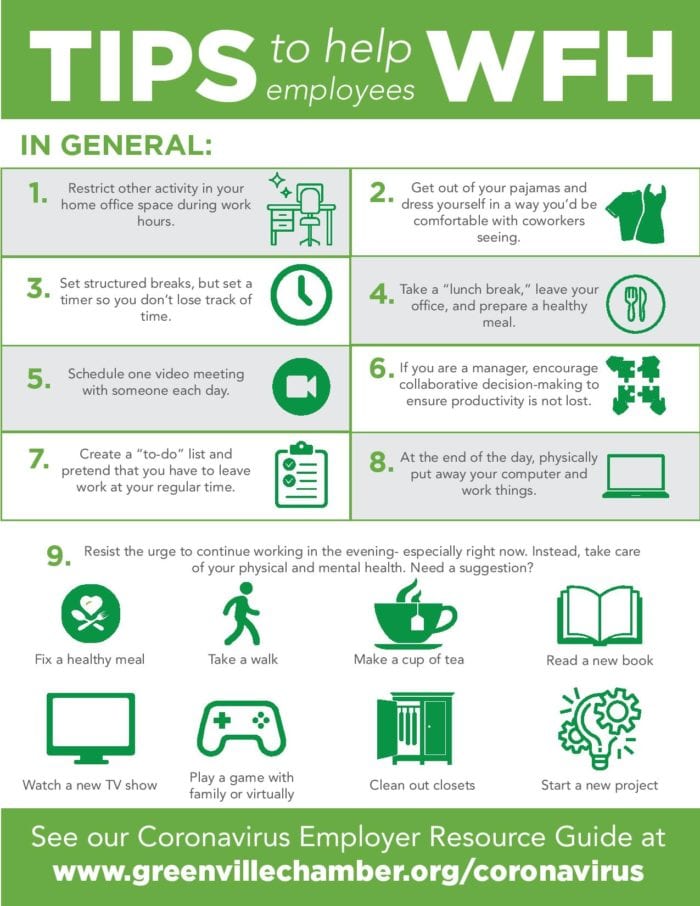Ice Cream All the Time!
March 18th, 2020

“Can we eat ice cream all the time?” I asked my mother as a child. The idea sounded as blissful to my childish ears as the fantasy of working from home has to my adult ones. I have often dreamed about working from home – in a nice sunny spot with my coffee, my cat and my fuzzy slippers; a fantasy escape while sitting in rush hour traffic or listening to my stomach growl through a meeting. However, as I now know, ice cream all the time has its downside, and working from home is not all sunshine and fuzzy slippers.
In the wake of COVID-19, many of us will be working from home either for the first time or with more regularity than we have before. Along with coffee and cats, working from home, if not intentionally organized, can result in lost productivity, boundary creep, less effective decision making and isolation – just to name a few. Add in kids suddenly ‘home-schooling,’ increased health concerns and uncertainty about how long this will last – and that sunshiny fantasy looks more like chaotic disaster!
Don’t give up yet! Here are some tried-and-true suggestions to help employers and workers alike navigate this temporary “new normal.”
In General:
Pick a space that is your “office,” and restrict other activity there during work hours. For most people, a desk or a corner of the kitchen table is the best option. Clear away household clutter from that area and set up your workspace as though your boss, coworkers and customers could see it.
Get dressed and ‘go’ to work. You don’t need to wear a suit, but get out of your pajamas! Be prepared to present yourself on a video screen or teleconference in a way that reflects what people would see if you were in the office.
As much as possible, set structured breaks – every hour get up and stretch. Every 2 hours take 15 minutes and do something else. One of the real joys of working from home is that you can pet your dog or take a walk or start some laundry during your break – so make great use of that opportunity! But set timers on your phone or the microwave so you don’t lose track while you are ‘on break.’
On that same note, take a lunch break – even if it is only 20 minutes. Leave your ‘office,’ prepare something to eat, and eat it in a different location. Consider taking a 10 minute walk or stretch outside where you can get some sunshine – and maybe wave at a neighbor (from six feet away).
Have a meeting with someone each day using video so that you can see someone else’s eyeballs. If you do not have that capacity on your computer, download a free app on your phone. (Zoom, Go-To-Meeting, Google Hangouts, and Microsoft Teams are a few of the many apps that will provide this service free of charge.)
If you are a manager, increase your group meeting frequency – although not necessarily meeting length. Consider having a short group meeting each day to talk about to-do lists and projects – and just let everyone know that you are all still a team. Encourage people to call, text, email and video chat when making decisions. Collaborative decision making is proven to result in better decisions most of the time – and it is one of the things that is quickly lost when people cannot just “stop by” a colleague’s office.
Create a “to do” list and pretend that you have to ‘go home’ at your regular time – so that you can focus on trying to get your list done during the workday.
At the end of the day, ‘leave’ your office. Either physically leave or put away your computer and work things.
Resist the urge to continue working in the evening – especially right now. Instead, devote your evening to taking care of your mental and physical health. Need a suggestion?
Fix a healthy meal
Take a walk in your neighborhood
Enjoy a cup of tea on your patio
Read a favorite book or watch a funny television or online show
Play a game with your family (or virtually if you live by yourself)
Clean out your closets
Make a list of projects you’ve been delaying
Keeping up your mental health is always important – and even more so when your universe shrinks in a “work-from-home” environment.
Additional Information for those with children at home:
Create a schedule for them or (if they are old enough) have them design a schedule for themselves, keeping as close to their school schedule as possible. For example, if they typically do English, Social Studies and Science in the morning, then have them do online assignments in that order or assign them reading or a school project (e.g. trace and color a map of South America).
Encourage them to schedule in breaks with activities they can look forward to.
Be realistic about the amount of supervision you are going to need to provide. If you will need to check in on them every 30 minutes or so, then plan those breaks into your day. Most children, even very young ones, can occupy themselves within eyesight for twenty minutes at a time which will allow you write an email or read a report. Reserve educational shows for those longer conference calls.
Coordinate with your office and family members to alternate schedules. Perhaps you can supervise children from 8-1 and an older child or family member can oversee play time from 1-4 while you work, and then you can work again later in the evening when the children are in bed.
There is no one-size-fits-all solution for the current environment. What is true is that, if companies and employees work together, we can figure out solutions to ensure that the critical work goes forward during these next few weeks (or months) and we come out of this situation smarter, healthier, and more productive than before! (And we might still like ice cream!)
Written by Leslie Hayes, Founder and President





